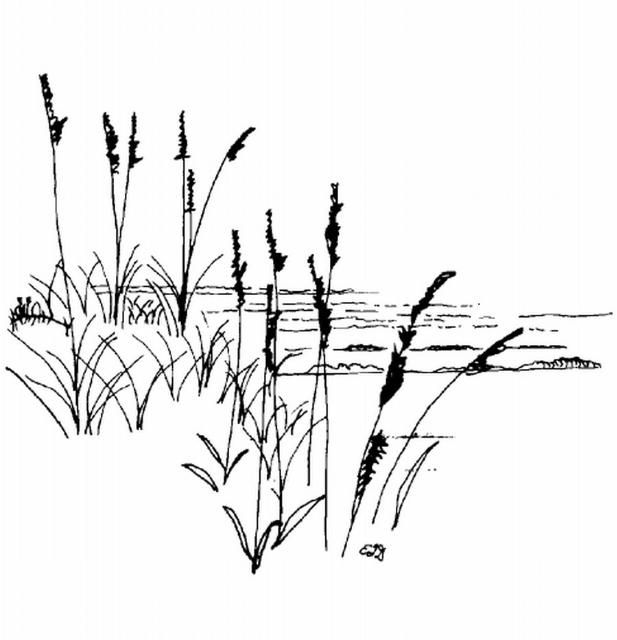Introduction
Sea oats once blanketed the coastal landscape along the southeastern United States from North Carolina to south Florida (Figure 1). Now they are endangered. They were the primary dune stabilizer and will grow right up to the high tide mark along the beach. Plants spread by means of underground rhizomes. Each plant develops a showy inflorescence about 5 feet tall. The oat-like fruit persists on the plant, giving the plant a nice texture as the wind blows. Existing plants should be saved wherever possible, and planting should be encouraged along the beaches.

General Information
Scientific name: Uniola paniculata
Pronunciation: yoo-NYE-oh-luh pan-nick-yoo-LAY-tuh
Common name(s): sea oats
Family: Gramineae
Plant type: herbaceous; ornamental grass
USDA hardiness zones: 7B through 11 (Figure 2)
Planting month for zone 7: year round
Planting month for zone 8: year round
Planting month for zone 9: year round
Planting month for zone 10 and 11: year round
Origin: native to Florida
Uses: mass planting
Availability: somewhat available, may have to go out of the region to find the plant

Description
Height: 5 to 8 feet
Spread: 1 to 2 feet
Plant habit: upright
Plant density: open
Growth rate: moderate
Texture: fine
Foliage
Leaf arrangement: most emerge from the soil, usually without a stem
Leaf type: simple
Leaf margin: entire
Leaf shape: linear
Leaf venation: parallel
Leaf type and persistence: evergreen
Leaf blade length: 12 to 18 inches
Leaf color: green
Fall color: no fall color change
Fall characteristic: not showy
Flower
Flower color: white
Flower characteristic: spring flowering; summer flowering
Fruit
Fruit shape: oval
Fruit length: .5 to 1 inch
Fruit cover: dry or hard
Fruit color: brown
Fruit characteristic: persists on the plant
Trunk Branches
Trunk/bark/branches: typically multi-trunked or clumping stems
Current year stem/twig color: not applicable
Current year stem/twig thickness: thick
Culture
Light requirement: plant grows in full sun
Soil tolerances: acidic; alkaline; sand
Drought tolerance: high
Soil salt tolerances: good
Plant spacing: 24 to 36 inches
Other
Roots: not applicable
Winter interest: no special winter interest
Outstanding plant: plant has outstanding ornamental features and could be planted more
Invasive potential: aggressive, spreading plant
Pest resistance: no serious pests are normally seen on the plant
Use and Management
You could not find a more drought tolerant plant for along the coast. Plant sea oats several feet apart to stabilize dunes along the beach. It is illegal to collect plants from the wild without special permits. Place sea oats in an area of the landscape that receives full sun. This plant may be grown throughout Florida.
Pests and Diseases
There are no known problems growing sea oats.